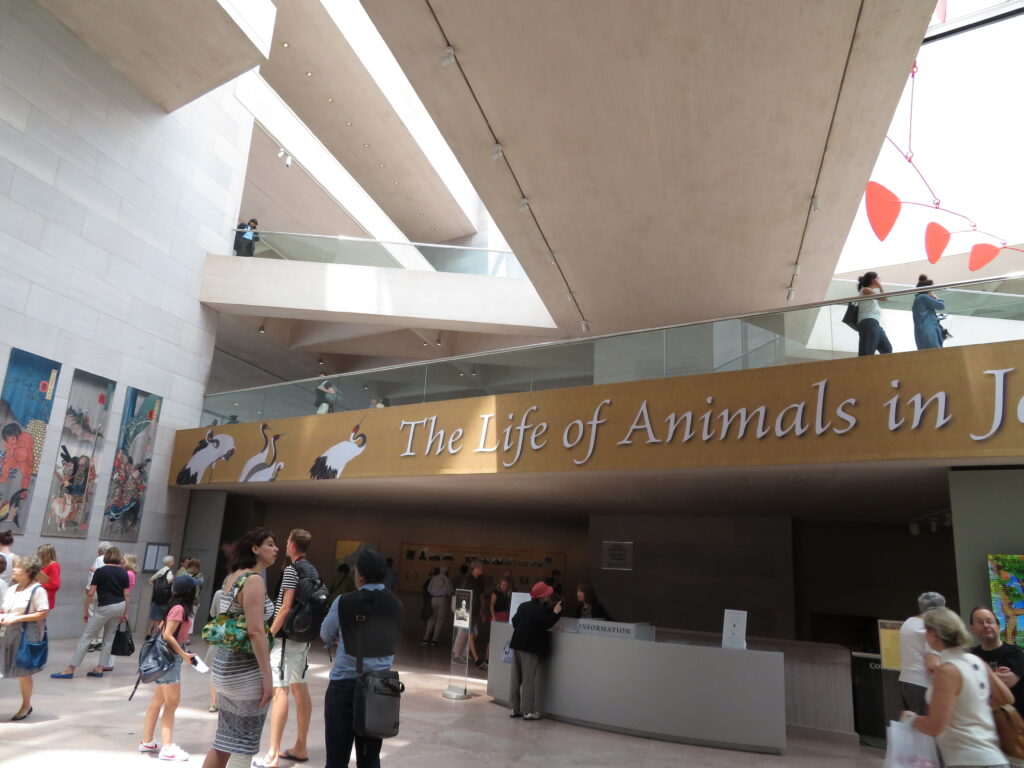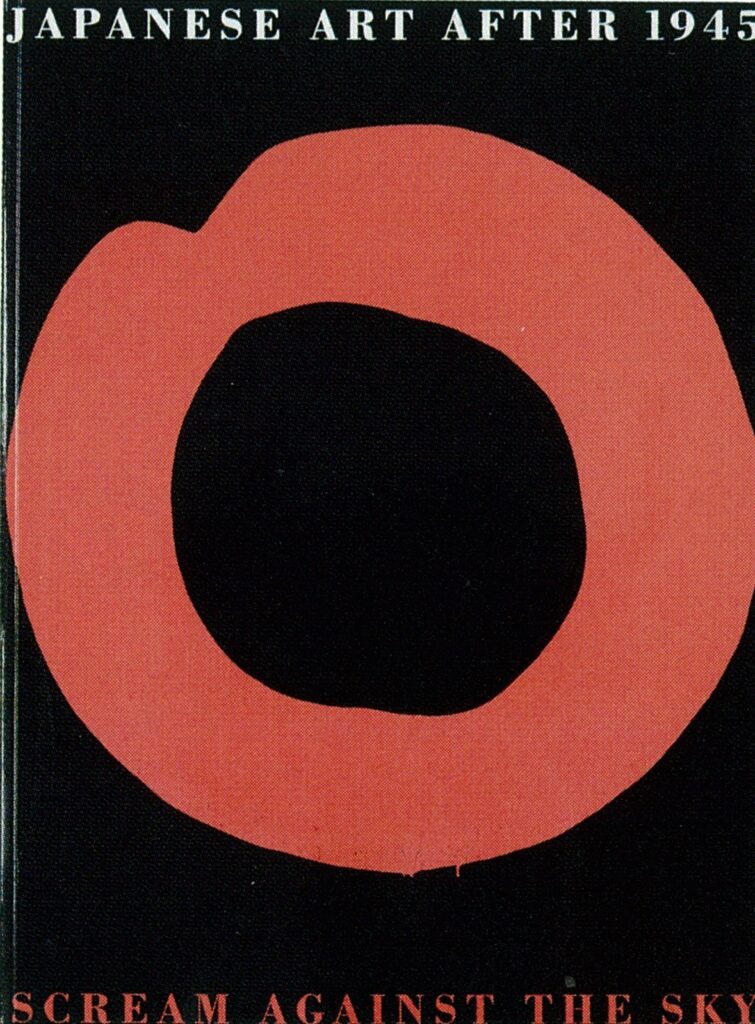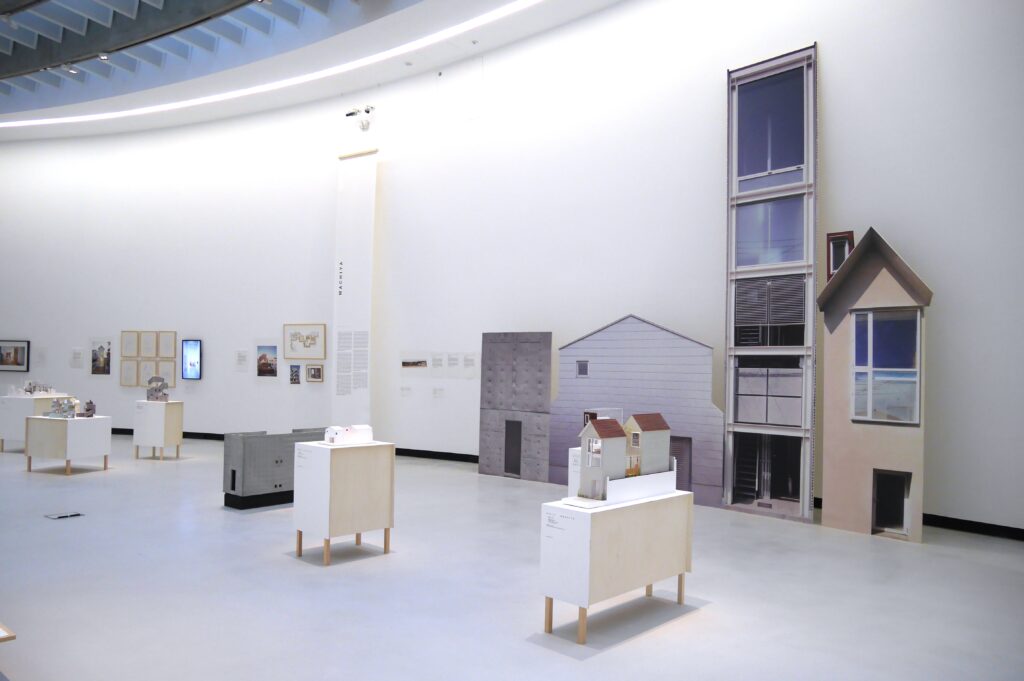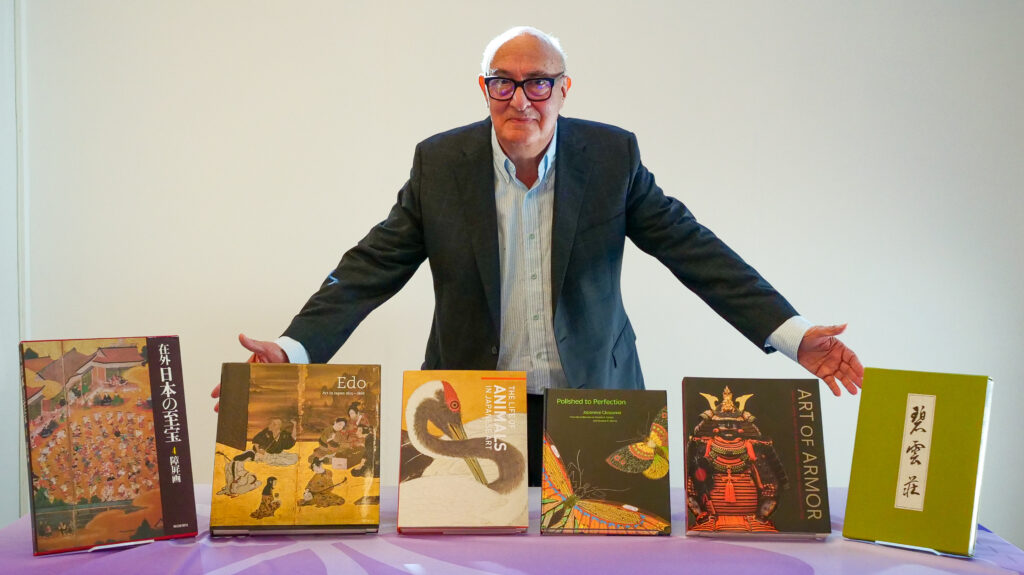2022.12.02
CULTUREThree Exhibitions Opening Up New Dimensions; Japanese Art and Architecture as Perceived by Overseas Curators

The entrance to the “The Life of Animals in Japanese Art” exhibition at the National Gallery of Art in Washington, D.C., in 2019.
Three exhibitions co-organized by the Japan Foundation, born out of the exchange of viewpoints and opinions between experts overseas and in Japan, caused a great sensation in their respective host countries in the past few decades. Here, we will shed light on the background to the exhibitions, which were centered on the themes of avant-garde art, residential architecture and animals.
More than 300 exhibitions in almost 80 countries—this is the total number of exhibitions that the Japan Foundation (JF) has organized since its establishment, in collaboration with major museums abroad. Themes have been wide-ranging, from ancient art to modern and contemporary art, photography, architecture, crafts, design and more and have conveyed the appeal of Japanese culture to people all around the world. Out of the many JF-organized exhibitions, we will introduce three examples held since the 1990s that have received high acclaim for their unique perspectives.
The Impact of “Japanese Art After 1945: Scream Against the Sky” in New York in 1994
New York, 1994. The Guggenheim Museum SoHo held a major exhibition, “Japanese Art After 1945: Scream Against the Sky,” as a comprehensive introduction to postwar Japanese art. The curator was Dr. Alexandra Munroe, currently Director of Curatorial Affairs at Guggenheim Abu Dhabi, as well as Senior Curator, Asian Art and Senior Advisor, Global Arts at the Solomon R. Guggenheim Museum.
This exhibition was lauded as groundbreaking in that it boldly presented Japanese avant-garde art since 1945 through the eyes of a single curator. The show introduced significant art movements such as the Gutai Art Association and Mono-ha, as well as Bokujinkai (People of the Ink Society), experimental film and butoh dance through the presentation of some 200 works by 100 artists. The catalog, which included a comprehensive artist biography and glossary of terms, was described as “a must-read for researchers of contemporary Japanese art.”

An exhibition catalogue of “Japanese Art After 1945: Scream Against the Sky.”
Dr. Munroe recalled her encounter with Japanese avant-garde art as follows: “I spent my childhood in Kobe, and grew up being deeply influenced by the Japanese Buddhist world and traditional culture, but at the same time I witnessed the upheaval of Japanese society of the postwar era. I envisioned my destiny to be a bridge between Japan and America, and in 1982, I started working at the Japan Society Gallery. My first project was a solo exhibition of SHINOHARA Ushio’s work. On my first visit to the artist’s studio in New York, I was shocked. I encountered giant sculptures of half-naked geisha astride motorcycles. Through my engagements with Shinohara and other contemporary Japanese artists working in the U.S., I realized that there was little information in English on them, even though their story was part of American art history!”
Feeling the conviction that their story needed to be told and that their creative activity was part of postwar Japanese history as well as belonging to an international context, in 1992, Dr. Munroe came to Japan as a Japan Foundation fellow. While engaging in thorough research, she put the results of her studies into practice as guest curator of the exhibition “Japanese Art after 1945: Scream Against the Sky” at the Yokohama Museum of Art. “It was reorganized as a JF-sponsored project and toured to New York and San Francisco. I was attempting to project Japanese avant-garde history onto global art history. I wanted people to look from the context of larger global movements and see the dynamic interaction between these and Japanese art. The other major conviction I had was to challenge the Western art canon that was dominated by men and show the presence of female artists such as KUSAMA Yayoi.”
In response to this ambitious endeavor, The New York Times featured a review as follows; “Scream Against the Sky” raises at least as many questions as it answers, but it confirms beyond doubt that any reading of contemporary Japanese art in purely Western terms will not do. Dr. Munroe continued to contribute to the international recognition of contemporary Japanese art through numerous exhibitions and was awarded the Japan Foundation Award in 2017.

Dr. Alexandra Munroe. Director, Curatorial Affairs, Guggenheim Abu Dhabi, and Senior Curator, Asian Art, and Senior Advisor, Global Arts, Solomon R. Guggenheim Museum. From the ages of 13 to 24, she lived in Japan while traveling back and forth overseas and grew up heavily influenced by Japanese culture. Awarded the 2017 Japan Foundation Award. Photo: David Heald © Solomon R. Guggenheim Foundation.
Discovery at the Exhibition “The Japanese House: Architecture and Life after 1945”, Rome, 2016
Since its earliest days, JF has also been involved in organizing exhibitions featuring architecture, design, crafts and other arts closely related to the daily lives of the Japanese people. One such exhibition was “The Japanese House: Architecture and Life after 1945,” an exhibition that JF co-organized in 2016 with the National Museum of 21st Century Arts (MAXXI), Italy. The curators were HOSAKA Kenjiro, the then Curator at the National Museum of Modern Art, Tokyo (MOMAT), Florence Ostende, Curator at the Barbican Centre, the United Kingdom, and Prof. Pippo Ciorra, Senior Curator at MAXXI.
Prof. Ciorra explains why he focused on the Japanese house. “The house is intimately connected to the society that creates it. Both Japan and Italy have a very strong sense of tradition, but in our view Japanese architects have been able to translate tradition into modern forms and solutions without losing its power. I thought that was something that Italian audiences could relate to.” This exhibition explored 75 examples of residential architecture by 56 architects active from the end of World War II up to the present day through over 400 pieces of material and documentation.

Scene from the exhibition “The Japanese House: Architecture and Life after 1945” in MAXXI. After MAXXI, this exhibition was held at the Barbican Centre in London, followed by the National Museum of Modern Art, Tokyo (MOMAT), in 2017. The design of the exhibition in Rome was led by architect TSUKAMOTO Yoshiharu, co-founder of Atelier Bow-Wow.
For Prof. Ciorra, it was important that everything be perfectly displayed. “We also had international shipping and installation in different spaces in mind, since the exhibition was scheduled to tour to London and Tokyo,” he said. In addition to drawings and videos, the exhibition also featured scale models of different architectural structures at each exhibition site, including a 1-to-1 scale model of “White U” by ITO Toyo, creating a markedly intense presence within the show.
“The Japanese architect generally starts from the inhabitant,” Prof. Ciorra reflected. “The Japanese architect is very good at embodying ideas of the ‘psychological portrait’ of the person who is going to inhabit the house, and thus establishes a better conversation with the inhabitant. On the other hand, Italian houses start from the architectural ideas. This creates a distance which often pushes people away from the architecture culture and profession. A small family building or a small house would easily skip the architect’s participation in the process and be happy with a design by an engineer or even a technician. In Japan, however, it is not unusual for world-class architects like ITO Toyo and SEJIMA Kazuyo to be engaged in designing small-scale private houses.”
As a large-scale exhibition specifically on the Japanese house—something which was never before held, at least in Italy or the United Kingdom—it gathered interest from a wide range of visitors. Perhaps because of its familiar theme of the house, the number of visitors who took their time to explore the exhibition site were noticeably more than usual. Visitors commented that it was “the most successful project ever carried out at MAXXI,” and that “both the show and its accompanying exhibition catalog were beautiful.”

Prof. Pippo Ciorra. Senior Curator of MAXXI, the National Museum of 21st Century Arts, Italy, and also an architectural critic. Photo: ©Francesca Tiberi
2019 Washington, D.C., an Encounter of Animal Expressions across Time and Space
Recently the highly acclaimed exhibition “The Life of Animals in Japanese Art” was held in the United States. As an official event of “Japan 2019,” an initiative for broadening interest in and understanding of Japanese arts and culture, it was co-organized by JF and the National Gallery of Art in Washington, D.C. and the Los Angeles County Museum of Art (LACMA). The co-curators were Mr. Robert T. Singer, the then Curator and Department Head, Japanese art at LACMA and Prof. KAWAI Masatomo, the then Director, Chiba City Museum of Art. Many Japanese experts also cooperated as executive committee members. As a Japan Foundation fellow in 1974, Mr. Singer is a veteran curator who has spent a long period of time studying Japanese art.
“This exhibition focused on the various expressions of animals in Japanese art. You see animals all through Japanese art, creatures of all kinds that are not seen in other culture’s art. In the West, the tiger or lion is occasionally depicted as a king, but in Japan, animals like this appear in all kinds of media. The art also shows that in the past, humans lived together equally with animals.”
The show incorporated over 300 invaluable works from about 100 major collections in Japan and the United States. Of those, the majority, including seven designated as Important Cultural Properties, had never been shown outside Japan. The criteria were clear for selecting the works, which included painting, sculpture, lacquer art, ceramic art, metalwork, cloisonné enamel, woodblock prints, textiles and photography. “I picked objects that appealed to me, that I had never seen before. And we decided that that would make it more interesting for the viewer,” said Mr. Singer. “We placed the utmost importance on the sense of liveliness and dynamism in pieces where the animals seemed to come out of the work. It wasn’t by artist or era—that’s not interesting. I wanted it to be important to look carefully at the artwork.”

At the exhibition “The Life of Animals in Japanese Art”, displayed beside each other were the bronze statue “Koudou Kasuga Shinroku Mishotai (Deer Bearing Symbols of the Kasuga Deities)”, which is an Important Cultural Property (left), and “Sculpture of a deer covered in glass beads” by NAWA Kohei (right). Photo courtesy of the National Gallery of Art, Washington Left: Deer Bearing Symbols of the Kasuga Deities, Hosomi Museum Right: NAWA Kohei PixCell-Bambi #14 2015 mixed media 61.6 × 60.0 × 60.0 cm Courtesy of SCAI THE BATHHOUSE
Visitors were greeted at the entrance to the venue by “Haniwa Dog,” a clay figurine from the 6th century, and “Sho-chan” (Kusama Yayoi’s polka-dotted three-dimensional dog). As with the 14th-century bronze statue “Kondou Kasuga Shinroku Mishotai” (Important Cultural Property) and “Sculpture of a deer covered in transparent glass beads” by NAWA Kohei, they were uniquely placed side by side. The route around the exhibition was not a straight line, but was calculated so that visitors would feel as if they were walking around a zoo of art.
Mr. Singer reveals that it was the theme of living creatures that gave him this exciting idea. “Objects have to speak to each other, perhaps meaning that a contemporary artist is speaking to something made 500 years ago, and this in turn gives the sense of speaking out to the viewer. As a foreigner, you may not know the conventions of Japanese art, and I thought maybe there’s another way to present such art.” There were many visitors who commented that the images of animals depicted in the art made them interested in Japan. Also, this exhibition was selected by The Wall Street Journal as some of “The Best Art of 2019.”

Mr. Robert T. Singer, the then Curator and Department Head, Japanese art at the Los Angeles County Museum of Art (LACMA), and 1974 Japan Foundation fellow. His first encounter with Japanese art was in college when he saw some pottery brought back from Japan by a senior student. “I was fascinated by the ‘perfection in imperfection’ of the Japanese concept of wabi-sabi.”
There is nothing like the excitement and surprise of visiting an art museum and coming into contact with another culture and its authentic art. At every exhibition JF has held as a co-organizer, we have sought ways to increase interest in Japan through genuine artistic experiences, and to further deepen understanding of Japan through new discoveries. To this end, it is important to work collaboratively with overseas curators who have in-depth knowledge of Japanese culture. JF will continue to make possible high-quality exhibitions in order to convey the appeal of Japanese culture by cooperating with experts and related organizations in Japan and abroad.
【Related pages】
Souls in Resonance, The Legacy of “Japonismes 2018”
International Art Exhibitions in Venice and Yokohama Bring Together Art and its Aficionados from around the World
In the Footsteps of TEZUKA Osamu, the “Manga Ambassador” Who Continues to Captivate the World with His Outstanding Foresight and Creativity
American Scholar Revealed the Profound World of The Tale of Genji
